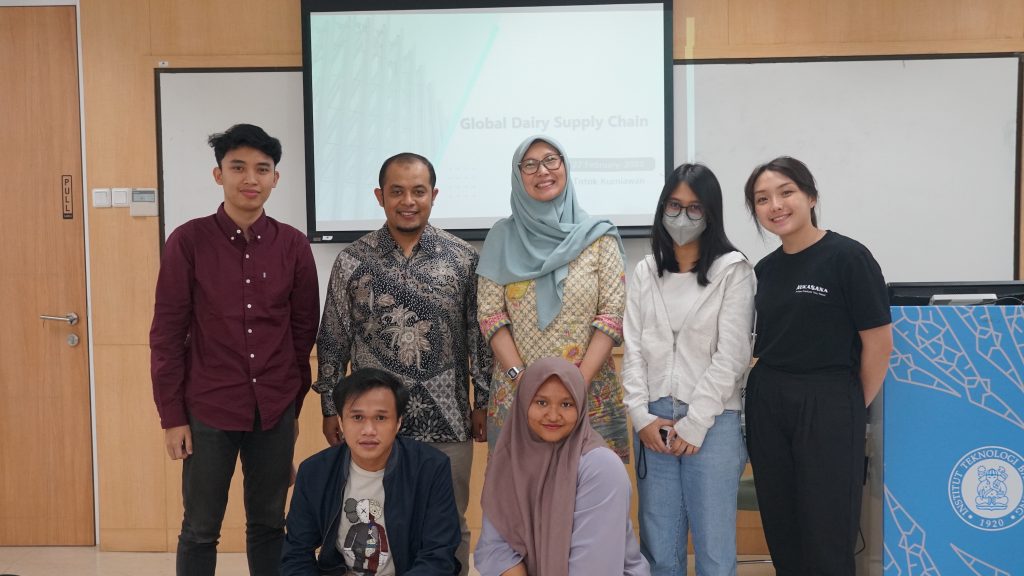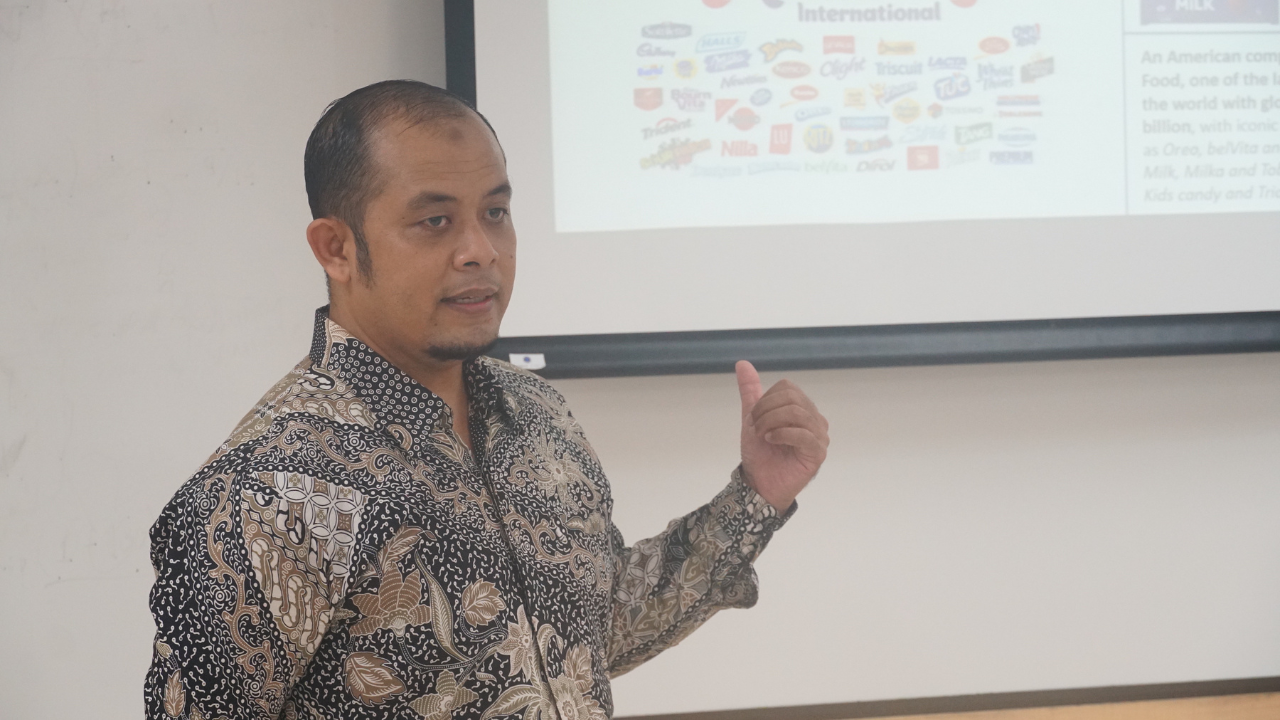The Covid-19 pandemic and Russia’s invasion of Ukraine have also disrupted the international trade supply chain. One of the disrupted trade commodities is dairy products. The costs and delivery times of finished products increased during the two global crises.
Seeing these conditions, Kalbe Nutritionals took four ways so that their production process could adapt to the global crisis. The four ways are improving standard operational processes, stock forecasting or inventory day policies, control mechanisms, and order fulfillment.
The Deputy Director of Supply Chain Management for Kalbe Nutritionals Totok Kurniawan explained the company’s strategy amid the global crisis while giving a guest lecture on the International Food Supply Chain at the Freeport Building, SBM ITB on Monday (27/2). In the lecture, Totok presented the “Global Dairy Product Supply Chain.”
According to Totok, the export supply chain consists of three layers. First is logistical, followed by transactional, and government. In contrast, the flow of the import supply chain consists of four channels: commodities, international, funds, and international policies.
“Indonesian people’s consumption of milk is low” said Totok. Milk consumption in Indonesia per capita is only 200 ml per day. It is far below the Netherlands, where per capita daily milk consumption reaches 4700 milliliters.
The low milk consumption in Indonesia is because we have no culture of drinking milk like in other countries. Interestingly, India, a country that does not have a culture of consuming milk, was ranked as the world’s largest dairy producer, based on the data from the Food and Agriculture Organization (FAO), in 2018.





